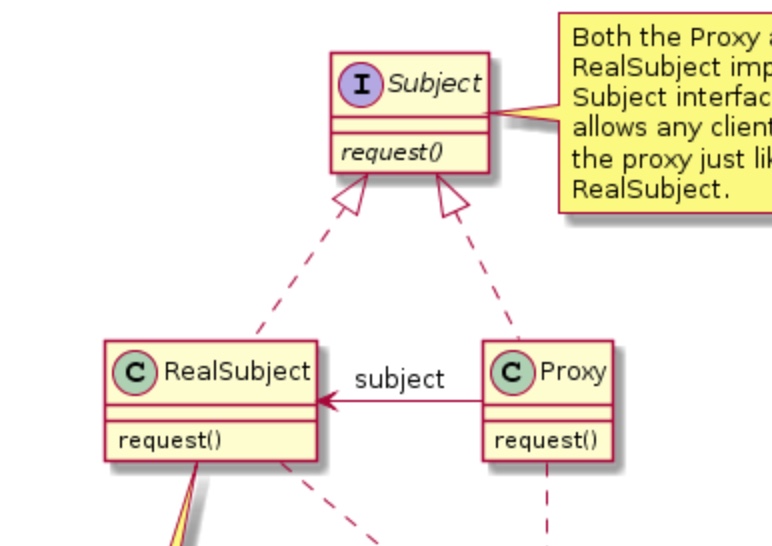Table Of Content

Proxy is a structural design pattern that lets you provide a substitute or placeholder for another object. A proxy controls access to the original object, allowing you to perform something either before or after the request gets through to the original object. The Proxy Servers can drastically improve the performance of the application. This is because it saves the results of a request for a certain period of time.
Complete Code of the above example:
How To Identify Fake MTG Cards - TheGamer
How To Identify Fake MTG Cards.
Posted: Thu, 03 Mar 2022 08:00:00 GMT [source]
Pranaya Rout has published more than 3,000 articles in his 11-year career. So, instead of going to the bank, he can walk to the nearest ATM with his Debit Card. Then, he inserts his Debit Card and enters the pin and withdrawal amount. The ATM will then communicate with the bank, validate the PIN and Amount, and if everything is fine, the ATM will give the money to Anurag immediately. So, instead of going to the bank, Anurag can withdraw Money from the ATM.
Creational Design Patterns
This will even further decrease the memory footprint of our application. We can access and modify the properties on the target object easily with the Reflect object.
Proxy Design Pattern Client Program
In this example, the Client interacts with the Subject interface, which is common to both RealObject and Proxy. This is when you have a heavyweight service object that wastes system resources by being always up, even though you only need it from time to time. If the client application requests the same video multiple times, the library just downloads it over and over, instead of caching and reusing the first downloaded file. As you can see in the following diagram, we have a shared computer with a shared folder on the right-hand side. On the left-hand side, we have employees who are working on a software farm.
Use AWS Network Firewall to filter outbound HTTPS traffic from applications hosted on Amazon EKS and collect ... - AWS Blog
Use AWS Network Firewall to filter outbound HTTPS traffic from applications hosted on Amazon EKS and collect ....
Posted: Mon, 12 Sep 2022 07:00:00 GMT [source]
Software Design Pattern in Different Programming Languages
We also declared a Role instance variables that we initialized through the constructor. But, we intentionally refrained from instantiating ReportGeneratorImpl in the constructor – we want to create it only when it is required. From Line 11 – Line 14, we implemented the displayReportTemplate() method.
References
Until then, no images will be loaded or processed, which will make our program much more efficient. The Proxy Design Pattern is a design pattern belonging to the set of structural patterns. Structural patterns are a category of design patterns used to simplify the design of a program on its structural level. In place of a complex or heavy object, a skeleton representation may be advantageous in some cases. When an underlying image is huge in size, it may be represented using a virtual proxy object, loading the real object on demand. In the above UML class diagram, the Proxy class implements the Subject interface so that it can act as substitute for Subject objects.
Protection Proxy Example
The objective of a proxy object is to control the creation of and access to the real object it represents. A common use of a proxy is to defer the cost of instantiating of an object (that is expensive to create) until it is actually needed by clients. If we implement the file manager as described above, we're going to be loading images every time they appear in the folder. If the user only wishes to see the name or size of an image, this kind of approach would still load the entire image into memory.

Types of Behvioural Patterns
What makes the Proxy Pattern distinct is that it has the same interface as the real object. You don’t need to worry about the client being aware about any changes from the introduction of the proxy. The client will keep using the same interface thinking it is interacting with the real object, while the proxy will be mediating in between. Continuing with the report viewer example, let’s start with a ReportGenerator interface and a ReportGeneratorImpl class that implements the interface. ReportGeneratorImpl objects generate complex reports for clients and are expensive to create.
Design Patterns - Proxy Pattern
Instead of interacting with this object directly, we want to interact with a proxy object. In JavaScript, we can easily create a new proxy by creating a new instance of Proxy. With a Proxy object, we get more control over the interactions with certain objects. A proxy object can determine the behavior whenever we’re interacting with the object, for example when we’re getting a value, or setting a value. Welcome back to the series, this time we’ll be on the Proxy Design Pattern!

It’s like forming a chain of guards, each responsible for a specific task. Instead of allowing all users to access specific resources or functions of an object, we want to ensure that only certain users can access those resources or functions at any given time. We can easily achieve this functionality using the Proxy Design Pattern in C#. The following are some real-time scenarios for using the Proxy Design Pattern. While developing Enterprise Applications with the Spring Framework, you will find lots of opportunities to apply the Proxy pattern or see it naturally at work within the framework APIs.
Create a class file named SharedFolderProxy.cs and copy and paste the following code. This class also implemented the Subject (ISharedFolder) interface and provided implementations for the PerformRWOperations. This Proxy class also holds a reference to the real object, i.e., the private ISharedFolder folder. To the constructor of this class, we are passing the Employee object, and within the PerformRWOperations method, we are checking whether the employee Role is either CEO or MANAGER. The Proxy acts as a surrogate or placeholder for the RealSubject.
We could have a user who isn't allowed to view or edit the resource, a user who can do with the resource whatever they wish, etc. Proxy Design pattern is one of the Structural design pattern and in my opinion one of the simplest pattern to understand. To run this code correctly, copy this code and save it in a file named “ProxyBankExample.java”.
Since loading and displaying images are expensive operations, this can cause performance issues. As can probably be inferred from the previous example, remote proxies are used to access some remote objects or resources. Besides remote proxies, there are also virtual proxies and protection proxies. Proxy design pattern common uses are to control access or to provide a wrapper implementation for better performance. In distributed object communication, a local object represents a remote object (one that belongs to a different address space).
Proxy is used to encapsulate functionalities of another object or system. Consider remote method invocation, for example, which is a way of calling methods on another machine. In Java, this is accomplished via a remote proxy which is essentially an object providing a local representation of another remote object.
In this case, the proxy passes the client request over the network, handling all of the nasty details of working with the network. In an ideal world, we’d want to put this code directly into our object’s class, but that isn’t always possible. For instance, the class may be part of a closed 3rd-party library.


No comments:
Post a Comment